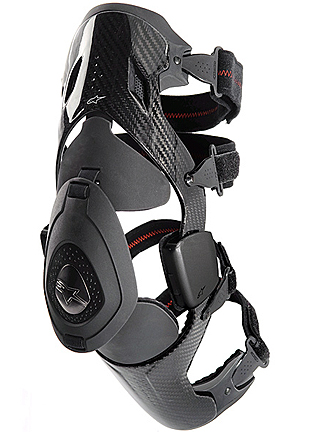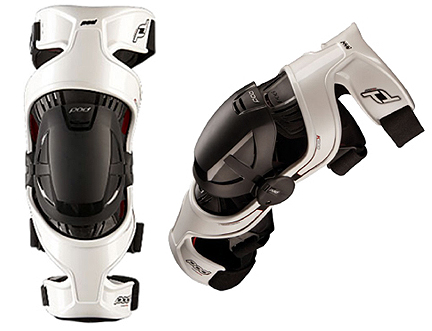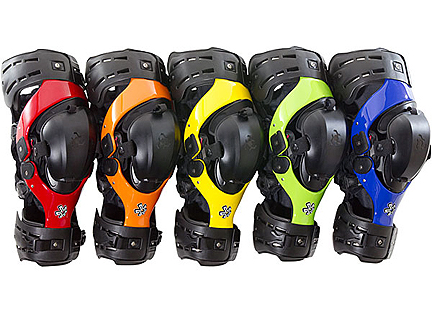The Ultimate Guide to Knee Braces: Worthy Investment or Bust?

Fact: ATV riding can be murder on the knees. Designed, as they were to absorb the impact of our body weight against the ground while stepping, ATV riding (and especially racing) can exert countless times more impact through our joints.
Contrary to common misconception, knee braces aren’t designed merely for those recovering from or who have suffered a knee injury (though they can be very helpful in those situations). The knee brace you may see worn after an injury is actually a rehabilitative brace designed to limit knee motion in either direction until injuries can heal (hence temporary fixes).
Believe it or not, there is a high degree of preventative medicine in riding with an off-road knee brace and the principle behind this is very similar to why a bug wears its skeleton on the outside of its body.

Knee braces function by providing a metal (usually aluminum) framework that connects the rider’s thigh with his shin WITHOUT disabling the knee’s ability to bend. However, thanks to a hinge with customizable stops, a brace will prevent the knee from being hyperextended or from bending too far inward.
In addition to blocking the knee’s ability to bend too far in either direction, a knee brace is designed to prevent twisting motion, a major culprit of serious knee injury while riding.
Of course a hard outer shell that encloses the metal exoskeleton frame and patella (knee cap) cup are also beneficial for stopping roost and absorbing impacts with the ground or the machine in the event of a get-off.
It should also be noted that what separates a knee brace from a kneepad is that (generally much more affordable) pads are designed only for exterior impact absorption… Think BMX or skateboarding kneepads for example. These are known medically as prophylactic braces.
A lot of riders wonder about the difference between an off-the-shelf knee brace and a custom built one and the answer really comes down to fitment. Like most things in life, a unit custom tailored to your body will, generally speaking, fit better and bend at all of the right points when compared to the more “one-size-fits-all” approach found in off-the-shelf units.
We would be remiss to imply there are no downsides to the knee brace. Two major disadvantages come in the form of price and feel. Pricing can be a bit steep initially (typically around $350 apiece) until you take a moment to consider the exuberant cost of medical care these days. Additionally the feel of riding with a knee brace can take some getting used to naturally not only due to the limitations of your ability to bend your knee but also the added bulk within your riding pants. Some riders also report a deadened feel in those instances where they use their knees to squeeze the sides of the quad’s gas tank.
Looking at the pros and cons, it’s really no surprise that the knee brace industry is as vast and varied as it is. These days composite materials such as carbon fiber are replacing bulkier, heavier metals of yesteryear.

